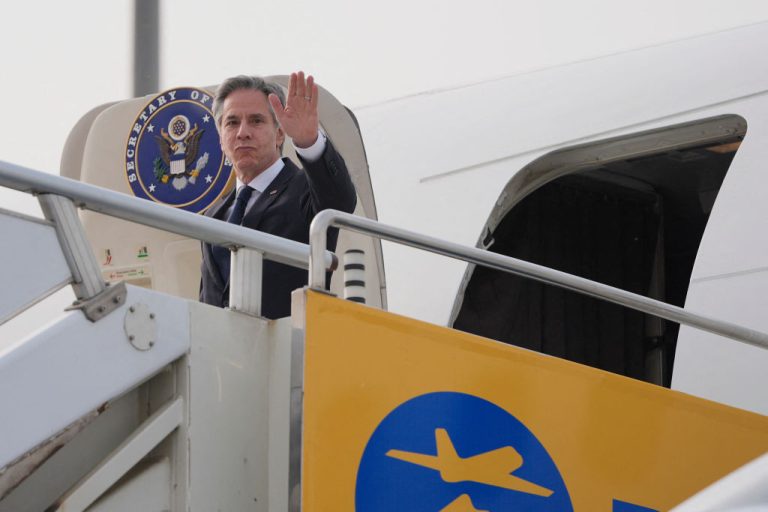On Tuesday, April 2, researchers with the University of Washington quietly conducted a first-of-its-kind experiment in solar radiation modification by launching salt crystals into the atmosphere from an aircraft carrier museum ship in the San Francisco Bay.
Solar radiation modification is a highly controversial field of study. Its use is intended to divert sunlight away from the earth to limit warming and the impacts of climate change, but experts admit that they are in the dark concerning its broader impact on the environment. The impacts could harm communities and ecosystems in unexpected ways.
According to Scientific American researchers didn’t widely announce the experiment so as to avoid public backlash. “The secrecy surrounding its timing caught even some experts off guard.”
‘CAARE’ project
Shuchi Talati, executive director of the Alliance for Just Deliberation on Solar Geoengineering, a nonprofit that seeks to include developing countries in decisions about solar modification, told Scientific American, “Since this experiment was kept under wraps until the test started, we are eager to see how public engagement is being planned and who will be involved.”
Talati added that “while it complies with all current regulatory requirements, there is a clear need to reexamine what a strong regulatory framework must look like in a world where [solar radiation modification] experimentation is happening.”
Success
You are now signed up for our newsletter
Success
Check your email to complete sign up
The project, dubbed the Coastal Atmospheric Aerosol Research and Engagement, or CAARE project, uses custom-built sprayers to shoot trillions of sea salt particles into the atmosphere in an effort to increase both the density and reflective capacity of marine clouds.
The particles are being launched from a decommissioned aircraft carrier, the USS Hornet Sea, Air & Space Museum in Alameda, California. The USS Hornet (CV-12) was commissioned in late 1943 and scored many victories during World War II, taking the name of a previous carrier that was sunk by the Imperial Japanese Navy earlier in the conflict.
According to a weather modification form the researchers filed with federal regulators, the experiments are expected to continue until the end of May.
The experiments have garnered interest from Silicon Valley funders and some environmental groups. Meanwhile, similar experiments that were to be conducted in Sweden last month were called off after encountering opposition from indigenous groups.
Solar radiation modification is highly controversial because its widespread use could impact ecosystems in ways that are yet to be understood, and could potentially limit the productivity of fisheries and farms.
There are other possible impacts. Experiments conducted in the United States could affect cloud conditions in neighboring countries, raising serious geopolitical risks.
Opponents of the researches also argue that it does nothing to address the root causes of climate change “and could lead to a catastrophic spike in global temperatures if major geoengineering activities were discontinued before greenhouse gasses decrease to manageable levels.”
READ MORE:
- Production Delays, Disarray in Boeing Factory Prior to Door Plug Near Tragedy, WSJ Reports
- Trillions of Cicadas to Swarm Several Eastern States This April
- Chinese-American Artists Targeted in Planned NYT Piece That Would Misrepresent Falun Gong, Shen Yun Performing Arts
- MTA Demands NYC Marathon Pay 750k Congestion Pricing Toll for Using Verrazzano Bridge
Experiments shrouded in secrecy
Researchers from the University of Washington as well as SilverLining, a geoengineering research advocacy group involved in CAARE, both declined interview requests from Scientific American, and the mayor of Alameda failed to respond to emailed questions about the experiment.
According to The New York Times — that was granted exclusive access to cover the initial firing of the spray cannons — the secrecy surrounding the experiment appears to be by design.
“The idea of interfering with nature is so contentious, organizers of Tuesday’s test kept the details tightly held, concerned that critics would try to stop them,” the Times reported.
However, the project team is arguing that they are being transparent, as visitors to the USS Hornet, which serves as a floating museum, will be able to view the experiment.
In a press release, Kelly Wanser, executive director of SilverLining, wrote, “The world needs to rapidly advance its understanding of the effects of aerosol particles on climate. With a deep commitment to open science and a culture of humility, the University of Washington has developed an approach that integrates science with societal engagement, and can help society in essential steps toward advancing science, developing regulations, promoting equitable and effective decision-making, and building shared understanding in these areas.”
These experiments are part of broader studies planned by the University of Washington. The second phase of the experiments will involve launching particles from a pier approximately a mile offshore, according to a recently released study description.
Greg Goldsmith, the associate dean for research and development at Chapman University, told Scientific American that the study fails to mention potential ecological impacts of the experiments and provided a warning.
“History has shown us that when we insert ourselves into modifications of nature, there are always very serious unintended consequences. And therefore, it would be prudent to listen to what history has shown and look for consequences,” Goldsmith said.















